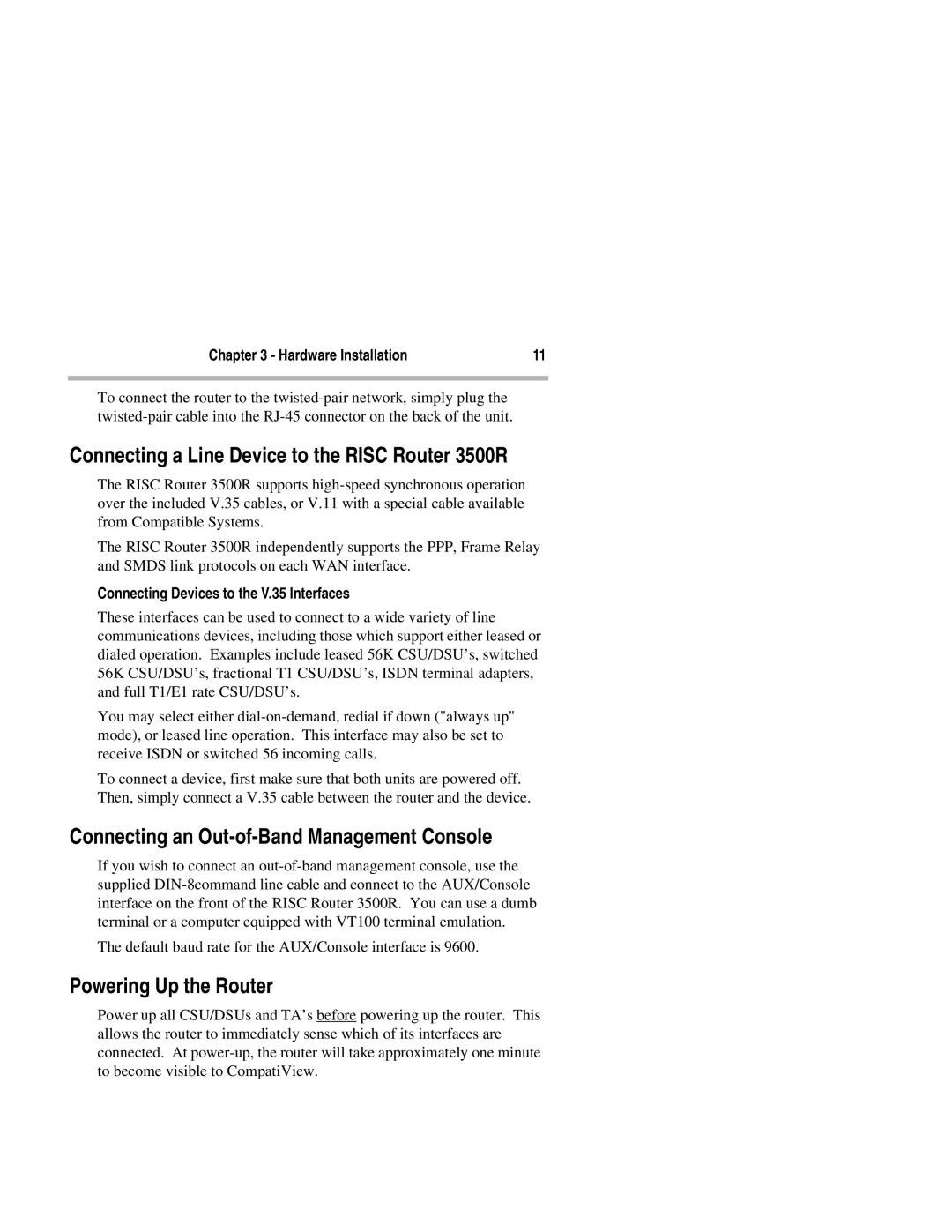Chapter 3 - Hardware Installation | 11 |
|
|
To connect the router to the
Connecting a Line Device to the RISC Router 3500R
The RISC Router 3500R supports
The RISC Router 3500R independently supports the PPP, Frame Relay and SMDS link protocols on each WAN interface.
Connecting Devices to the V.35 Interfaces
These interfaces can be used to connect to a wide variety of line communications devices, including those which support either leased or dialed operation. Examples include leased 56K CSU/DSU’s, switched 56K CSU/DSU’s, fractional T1 CSU/DSU’s, ISDN terminal adapters, and full T1/E1 rate CSU/DSU’s.
You may select either
To connect a device, first make sure that both units are powered off. Then, simply connect a V.35 cable between the router and the device.
Connecting an Out-of-Band Management Console
If you wish to connect an
The default baud rate for the AUX/Console interface is 9600.
Powering Up the Router
Power up all CSU/DSUs and TA’s before powering up the router. This allows the router to immediately sense which of its interfaces are connected. At
